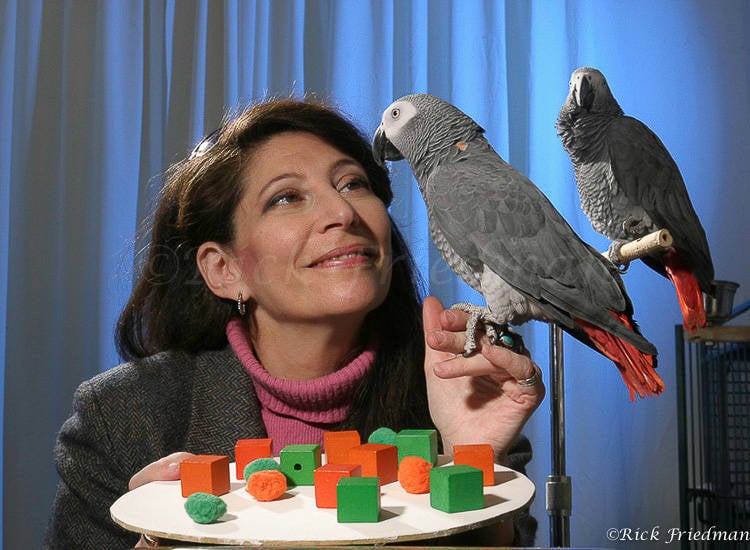African Grey Parrot Personality, Food & Care – Pet Birds by Lafeber Co. Retrieved March 15, 2019 from https://lafeber.com/pet-birds/species/african-grey-parrot/
Alex, B. (2018). How Did Human Language Evolve? Scientists Still Don’t Know. Retrieved from http://blogs.discovermagazine.com/crux/2018/12/07/where-does-language-come-from/#.XMVwYegzYuU
Arthur – Alex Foundation. (2013). Retrieved from https://alexfoundation.org/arthur/
Barker, T. (2017). Zebra finch study finds mixed impact of early-life stress [Blog]. Retrieved from https://blogs.illinois.edu/view/7447/516042
Berwick, R., Okanoya, K., Beckers, G., & Bolhuis, J. (2011). Songs to syntax: the linguistics of birdsong. Trends In Cognitive Sciences, 15(3), 113-121. doi: 10.1016/j.tics.2011.01.002
Buck, R., & VanLear, C. A. (2002). Verbal and nonverbal communication: Distinguishing symbolic, spontaneous, and pseudo-spontaneous nonverbal behavior. Journal of communication, 52(3), 522-541.
Carey, B. (2007). Alex, a Parrot Who Had a Way With Words, Dies. Retrieved March 15, 2019 from https://www.nytimes.com/2007/09/10/science/10cnd-parrot.html
Chapman, M., James, V., & Barrett-Lee, L. (2012). The girl with no name. Mainstream Publishing.
Chomsky, N. (1964). Aspects of the Theory of Syntax. MASSACHUSETTS INST OF TECH CAMBRIDGE RESEARCH LAB OF ELECTRONICS.
Chomsky, N. (1992). On the nature, use and acquisition of language. Thirty Years of Linguistic Evolution. Studies in Honor of René Dirven on the Occasion of his Sixtieth Birthday. Philadelphia: John Benjamins, 3-29.
Darwin, C. (1871). The descent of man: And selection in relation to sex. London: J. Murray.
Erard, M. & Matacic, C. (2018). Can these birds explain how language first evolved? [Online article]. Retrieved from https://www.sciencemag.org/news/2018/08/can-these-birds-explain-how-language-first-evolved
Fromkin, V., Krashen, S., Curtiss, S., Rigler, D., & Rigler, M. (1974). The development of language in Genie: A case of language acquisition beyond the “critical period”. Brain and language, 1(1), 81-107.
Gibson, K. R., & Tallerman, M. (Eds.). (2012). Oxford Handbook of Language Evolution (p. 110). Oxford University Press.
Hakuta, K., Bialystok, E., & Wiley, E. (2003). Critical Evidence. Psychological Science, 14(1), 31-38. doi: 10.1111/1467-9280.01415
Hattenstone, S. (2013). Was Marina Chapman really brought up by monkeys? The Guardian. Retrieved April 24, 2019 from https://www.theguardian.com/science/2013/apr/13/marina-chapman-monkeys
Hauser, M. D., Chomsky, N., and Fitch, W. T. (2002). The faculty of language: What is it, who has it, and how did it evolve? Science 298, 1569–1579.
Hedeager, U. (2003). Is language unique to the human species? Retrieved April 24, 2019 from http://www.columbia.edu/~rmk7/HC/HC_Readings/AnimalComm.pdf
Herman, L. M. (1986). Cognition and language competencies of bottlenosed dolphins. Dolphin cognition and behavior: A comparative approach, 221-252.
Holman, R. (2008). Psittacus erithacus (grey parrot). Retrieved from https://animaldiversity.org/accounts/Psittacus_erithacus/
Jablonka, E., Ginsburg, S., & Dor, D. (2012). The co-evolution of language and emotions. Philosophical Transactions of the Royal Society B: Biological Sciences, 367(1599), 2152-2159.
Kent, J. 1972. Eight months in the hospital. Paper presented at the 80th Annual Convention of the American Psychological Association, Honolulu, Hawaii, Sept. l-8.
Lamoureux, A. (2018). Why Alex The Parrot May Have Been The World’s Smartest Bird [VIDEO]. Retrieved March 15, 2019 from https://allthatsinteresting.com/alex-the-parrot-irene-pepperberg
Lehrer, J. (2008). Bird Brains: Are Parrots Smarter Than a Human Two-Year-Old?. Retrieved from https://www.scientificamerican.com/article/bird-brains-parrots-smarter/
Lyons, J. (2006). Natural language and universal grammar. Cambridge: Cambridge University Press, p.1.
Mehler, J., Christophe, A., Ramus, F., Marantz, A., Miyashita, Y., & O’Neil, W. (2000). How infants acquire language: some preliminary observations. In Image, Language, Brain: Papers from the first Mind-Brain Articulation Project symposium (pp. 51-75). MIT Press, Cambridge, MA.
Okanoya, K. (2012). Behavioural factors governing song complexity in Bengalese finches. International Journal of Comparative Psychology, 25(1).
Pepperberg, I. M. (2002). Cognitive and communicative abilities of grey parrots. Current Directions in Psychological Science, 11(3), 83-87.
Pepperberg, I. (2007). Grey parrots do not always ‘parrot’: the roles of imitation and phonological awareness in the creation of new labels from existing vocalizations. Language Sciences, 29(1), 1-13. doi: 10.1016/j.langsci.2005.12.002
Pepperberg, I. (2010). Vocal learning in Grey parrots: A brief review of perception, production, and cross-species comparisons. Brain And Language, 115(1), 81-91. doi: 10.1016/j.bandl.2009.11.002
Pepperberg, I. (2012). Evolution of communication and language: insights from parrots and songbirds. In M. Tallerman & K. Gibson, The Oxford Handbook of Language Evolution (1st ed., pp. 109-119). New York: Oxford University Press Inc.
Pepperberg, I. (2017). Athena the parrot [Image]. Retrieved from https://lafeber.com/pet-birds/wp-content/uploads/PepperbergParrot.jpg
Pepperberg, I. (2017). Inside Pepperberg’s Lab: African Grey Athena’s Antics – Pet Birds by Lafeber Co. Retrieved from https://lafeber.com/pet-birds/inside-pepperbergs-lab-african-grey-athenas-antics/
Pepperberg, I. (2019). Study shows parrots can pass classic test of intelligence. Retrieved March 15, 2019 from https://phys.org/news/2019-02-parrots-classic-intelligence.html
Radford, E. (2013). Genius African Grey Parrot Has Died [Video]. Retrieved from https://www.inquisitr.com/566539/genius-african-grey-parrot-has-died-video/
Saini, A. (2015). Language and birdsong may use the same brain structures [Online article]. Retrieved from http://www.bbc.com/earth/story/20150512-birds-hold-the-key-to-language
Savage-Rumbaugh, E. S., Rumbaugh, D. M., & Boysen, S. (1980). Do Apes Use Language? One research group considers the evidence for representational ability in apes. American Scientist, 68(1), 49-61.
Slater, P. (2012). Bird song and language. In M. Tallerman & K. Gibson, The Oxford Handbook of Language Evolution (1st ed., pp. 96-101). New York: Oxford University Press Inc.
Smith, D. (1999). A Thinking Bird or Just Another Birdbrain?. Retrieved March 15, 2019 from https://www.nytimes.com/1999/10/09/arts/a-thinking-bird-or-just-another-birdbrain.html?showabstract=1
Stout, D., & Chaminade, T. (2012). Stone tools, language and the brain in human evolution. Philosophical transactions of the Royal Society of London. Series B, Biological sciences, 367(1585), 75–87. doi:10.1098/rstb.2011.0099
Suzuki, T., Wheatcroft, D., & Griesser, M. (2016). Experimental evidence for compositional syntax in bird calls. Nature Communications, 7(1). doi: 10.1038/ncomms10986
Thomas, J. (1995). Center-embedding and self-embedding in human language processing (Masters). Massachusetts Institute of Technology.
Thomas, J. G. (2014). Self-domestication and language evolution.
Thomas, J., & Kirby, S. (2018). Self domestication and the evolution of language. Biology & philosophy, 33(1-2), 9.
University of Lincoln. (2014, February 25). Reciprocity and parrots: Griffin the grey parrot appears to understand benefits of sharing, study suggests. ScienceDaily. Retrieved March 15, 2019 from www.sciencedaily.com/releases/2014/02/140225122322.htm
Vajda, E. J. (2003). Review of: An Introduction to Syntax.
Wood, S. (2005). What are formants?. Retrieved April 25, 2019 from https://person2.sol.lu.se/SidneyWood/praate/whatform.html




